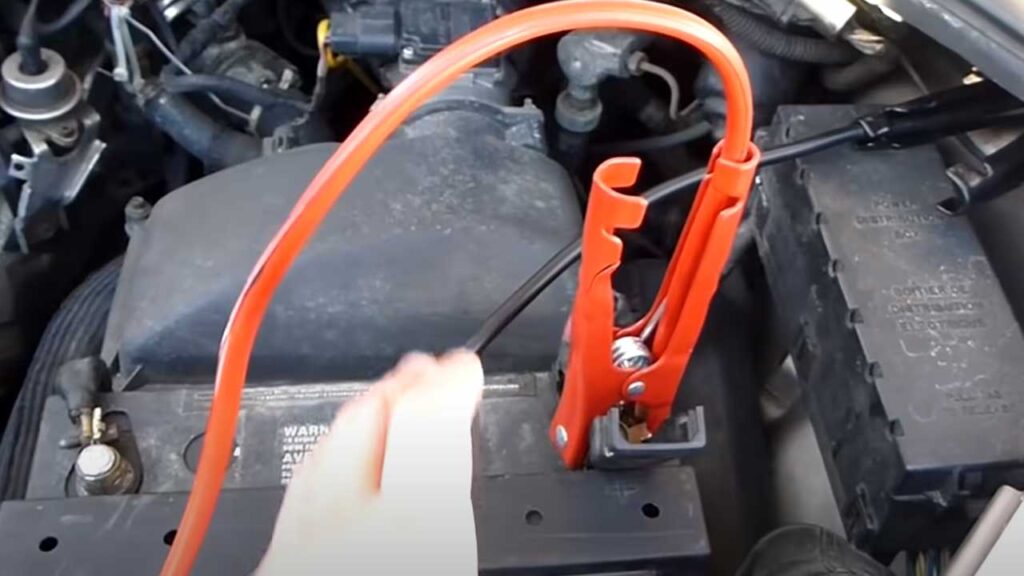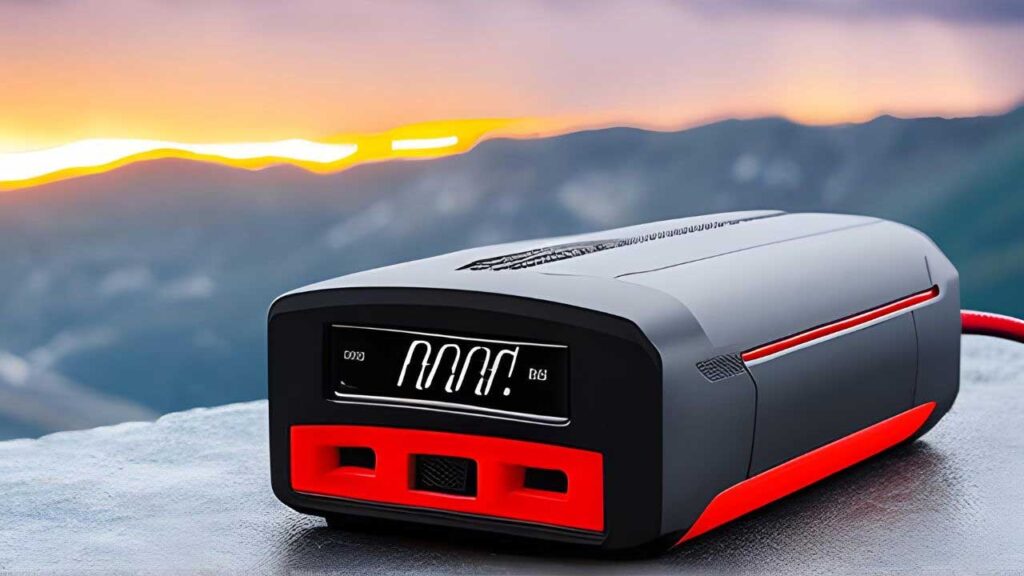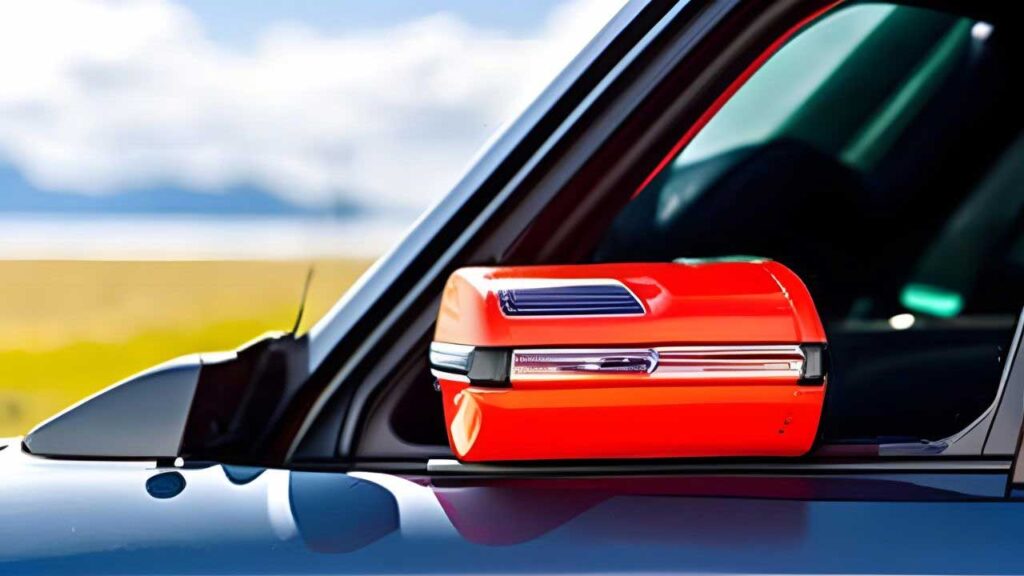To jumpstart a car with a jump starter, first make sure that the jump starter is charged. Then turn off both cars and connect the two jumper cables to each battery accordingly (positive cable to positive terminal, negative cable to negative terminal). Once connected, start up the working car and leave it running for at least 5 minutes.
After that time has elapsed, try starting the dead car; if successful, disconnect the cables in reverse order of connection (negative then positive) and you are ready to go! If unsuccessful on your first attempt at starting the dead vehicle, wait 20 minutes before trying again.
- Step 1: Prepare the car with a jump starter by connecting it to the battery
- Make sure the red cable is connected to the positive terminal of your battery and black cable should be connected to negative terminal
- Step 2: Turn on the jump starter power switch
- This will start charging your dead battery and turning on all necessary lights, signals etc in your car
- Step 3: Start up engine of donor vehicle that has its own healthy battery, this is done so as to provide enough power for reviving from dead car’s battery
- The jumper cables need to be attached carefully between both cars’ batteries terminals (red goes positive and black goes negative)
- Step 4: Let both engines run for at least five minutes before disconnecting them
- After 5 minutes turn off both vehicles first then disconnect jumper cables in reverse order of connection (black first then red) making sure connections are not loose or faulty
- Step 5: Finally try starting up engine of revived car, if it starts normally you can drive away; otherwise repeat steps again until desired result is achieved
Portable Jump Starter Not Starting Car
If you have a portable jump starter and it won’t start your car, the first step is to check the battery connections. Make sure they are secure and all cables are connected properly. If that doesn’t solve the problem, try using another vehicle to give your car a jump start.
If that still doesn’t work, it might be time to take your vehicle in for an inspection as there may be an issue with its starting system or electrical components.

How Long Does a Jump Starter Take to Charge a Car Battery
Jump starters can take anywhere from 8 to 24 hours to charge a car battery, depending on the size of the battery and how discharged it is. It’s important that you leave your jump starter connected until it has reached its full capacity so as not to damage the battery or cause any other problems with your car. If you’re in a rush, consider purchasing a high-output jump starter which will typically charge faster than regular models.
How to Charge Jump Starter Without Charger
One way to charge your jump starter without a charger is by connecting it directly to the car battery. To do this, you’ll need some jumper cables and a set of safety gloves. First, attach one end of the jumper cable onto your jump starter’s positive terminal (red) and then connect the other end to the car battery’s positive terminal (also red).
Next, attach one end of the second jumper cable onto your jump starter’s negative terminal (black) and then secure it with the corresponding negative terminal on your car battery (also black). Once everything is connected properly, start up your vehicle and let it run for at least 10 minutes so that power can be transferred from vehicle’s engine into your jump starter. When finished charging, remember to unplug both ends safely before disconnecting them from each other.
How to Charge a Jump Starter
Charging a jump starter is relatively easy and requires minimal effort. The first step is to locate the charging port on the device, which usually looks like a small rectangular port with two metal prongs sticking out of it. Once you’ve found this, simply plug your charger into an electrical outlet and then attach the other end of the cable to the charging port on your jump starter.
Your jump starter should indicate when it’s finished charging by illuminating a light or displaying a message telling you that it’s ready for use.
Jump Start Battery Pack
A jump start battery pack is a portable device that provides an emergency source of power to your car’s battery. It consists of a set of rechargeable batteries and cables that are connected to the car’s battery terminals, allowing you to give your vehicle the necessary boost it needs in order for it to start up again. A jump starter pack is one of the most important tools any driver can have on hand, as it ensures you won’t be stuck due to a dead or weakened battery.

How Do You Charge a Dead Car Battery With a Jump Starter?
Jump starting a dead car battery is an easy process, but you need to be aware of the safety precautions and have the right equipment. First, make sure both vehicles are parked in neutral or park with their parking brakes engaged. Next, turn off all electrical components on both cars – radios, lights etc and then attach one end of the positive (+) jumper cable to the positive terminal on your dead battery and the other end to the corresponding terminal on your donor vehicle’s working battery.
Then connect one end of the negative (-) jumper cable to a clean unpainted metal surface near your dead battery (such as alternator bracket) and finally attach remaining negative jump start clamp to that same surface on donor car’s working battery. Now start up your donor vehicle for about 5 minutes so it charges up your dead battery enough for you to start up yours – try not doing this too long as you don’t want to harm either batteries by overcharging them! Finally remove cables from both batteries carefully in reverse order: first disconnecting negative (-), then positive (+), ensuring that no contact occurs between clamps when unplugging them – otherwise sparks may fly which could cause damage or even fire!
If done properly this should get you back out onto roads again without needing assistance from tow truck driver.
Can I Jump Start a Car Through the Starter?
No, you cannot jump start a car through the starter. Jump starting a vehicle requires connecting two batteries in series, to provide extra electrical power to the dead one. This is done by connecting jumper cables from the good battery to both terminals on the bad battery and then turning on the engine of the working car so that it can transfer some of its energy throught he cables into the other vehicle’s dead battery.
The starter itself only serves as an ignition switch for activating your engine, which provides no additional power assistance. Therefore, attempting to jump start a car by trying to connect directly to its starter will not work and could potentially damage both vehicles’ components if done incorrectly.
How Long Does It Take to Jump a Car With a Jump Starter?
Jumping a car with a jump starter can be done quickly and safely, but it does take some time. The process of connecting the cables from the jump starter to your car’s battery can take around five minutes. Depending on how discharged the battery is, you may need to leave the jumper connected for at least 10-15 minutes before attempting to start your vehicle.
This allows enough time for the current from the jump starter to charge up your battery sufficiently so that it has enough power to turn over your engine. Once you’ve given your battery a good charge, you should be able to start up without any further issues. It is also important that once you have started up successfully, you keep running your engine for at least 20 minutes before disconnecting from the jumper – this will allow sufficient time for proper charging and recharging of both batteries involved in order to avoid damaging either one during or after use.
Do You Jump Starter Negative Or Positive First?
When it comes to jump starting a car, the question of which cable should be connected first is an important one. The correct answer is that you should always connect the positive cable before connecting the negative cable. This order helps prevent sparks from occurring as well as any potential damage to your vehicle’s delicate electrical components.
First, attach one end of the red (positive) jumper cable to the positive terminal on your dead battery and secure it in place with pliers or some other clamping device. Then attach the other end of this same cable onto the live battery’s positive terminal and secure it in place there too. After that, take your black (negative) jumper cable and simply clip one end onto a metal surface on your car’s engine block away from both batteries; this provides grounding for safety reasons so that static electricity does not build up during connection/disconnection activities.
Finally, take the remaining free end of this same jumper cable and attach it securely to your dead battery’s negative terminal post before turning on either vehicle’s ignition switch or attempting to start either engine; this completes all necessary connections for safe jump starting operations!
How to Properly Jump Start a Car
Conclusion
Jump starters are a great way to quickly and safely jumpstart your car without having to rely on another vehicle or person. With the right setup and some basic safety precautions, you can be back on the road in no time. Keep in mind that if your car has any major issues such as dead batteries, bad alternators or faulty wiring then it may require more than just a jump starter to get back up and running properly again.
In conclusion, using a jump starter is an easy and convenient way to get your car started when its battery runs out of juice.

Hi, I’m Kermit L. Williams, and I’ve spent the better part of my life immersed in the world of automobiles, with a particular passion for Powerstroke engines. As an automotive expert, I’ve spent countless hours tinkering with engines, testing products, and sharing my knowledge with other enthusiasts.
Through my work on PowerstrokeGuides.com, I aim to share that knowledge with others and help them make informed decisions about their automotive purchases and maintenance. Whether you’re a seasoned Powerstroke enthusiast or just starting out, I’m here to provide you with the insights and expertise you need to take your vehicle to the next level.







